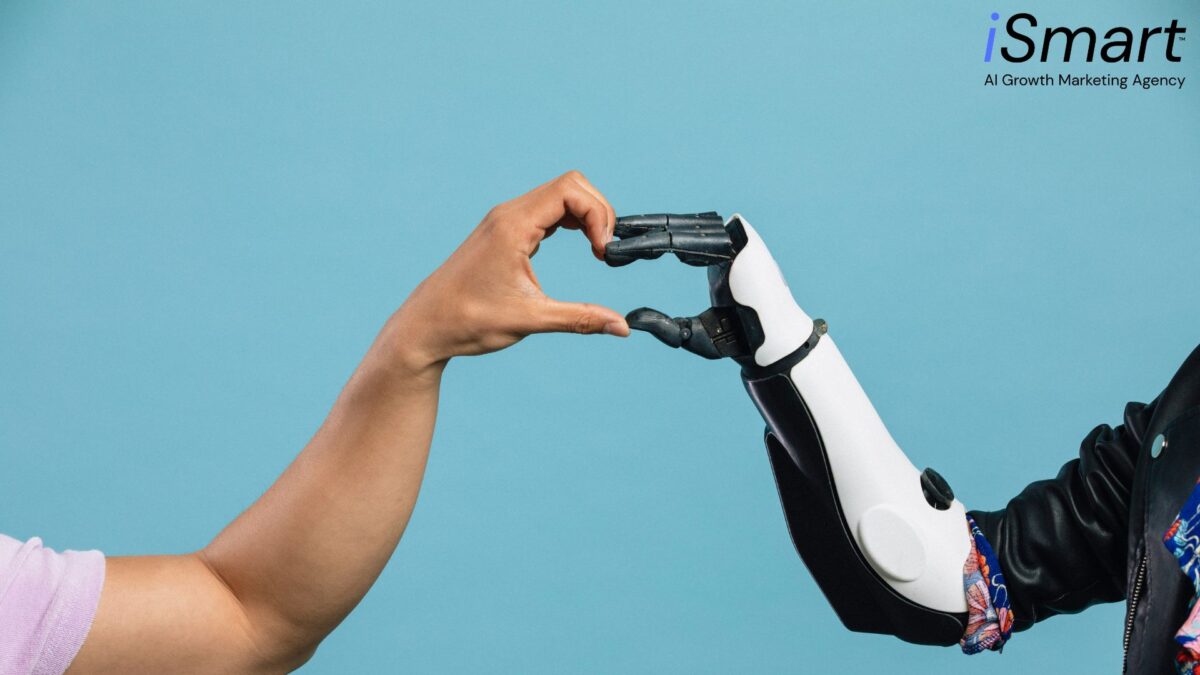AI-Powered Strategies for Hyper-Targeted Marketing
October 14, 2024AI Chatbots and Customer Engagement: Revolutionizing Customer Service
October 17, 2024Ever feel like there just aren’t enough hours in the day to keep up with all the content demands? Well, you’re not alone. But good news: artificial intelligence (AI) is swooping in to save the day. AI is transforming content creation as we know it, making the entire process faster, smarter, and much more efficient. Whether you’re crafting blog posts, churning out social media content, or building email campaigns, AI can help take the grunt work off your plate, leaving you more time for creative thinking.
In this post, we’re going to dive deep into how AI can streamline your content creation process, allowing you to produce high-quality work at a fraction of the time. We’ll look at how it’s done, the best tools to use, and how to integrate AI seamlessly into your workflow—without losing that all-important human touch.

Why AI is a Game-Changer in Content Creation
Understanding AI in Content Creation
Before we get into the nitty-gritty, let’s answer a simple question: What’s AI got to do with content creation? Well, AI works through machine learning, which means it learns from data inputs and can assist with tasks like writing, editing, and even keyword optimization. You can think of it as your personal assistant that never sleeps and is capable of handling repetitive tasks at lightning speed.
Instead of burning hours trying to generate topic ideas or fine-tuning SEO, AI tools can help you get a head start by automating these processes. It helps you focus on the high-level creative aspects, while the machine handles the mundane parts—like proofreading, structuring, or researching.
AI Tools Available Today
There are quite a few AI tools that have already made significant waves in the content creation space. ChatGPT and Jasper are well-known for their writing and ideation capabilities, while tools like Grammarly and Hemingway Editor are your go-tos for improving grammar, readability, and style. If SEO is your concern, SurferSEO and Clearscope are fantastic for optimizing your content for search engines. Want to automate the distribution? You can’t go wrong with Buffer or Hootsuite.
Saving Time and Boosting Productivity
Time is money, and if there’s one thing AI excels at, it’s saving time. By automating repetitive tasks, AI allows content creators to focus on what they do best: creating. Whether you’re brainstorming, drafting, or distributing, AI-powered tools can cut your workflow in half—if not more. Imagine having an outline ready for you in seconds or getting instant feedback on your article’s SEO potential.

Types of Content AI Can Help With
Blog Posts and Articles
AI can assist with just about every stage of blog post creation—from ideation to outlining and even drafting full articles. AI tools like Copy.ai or Jasper can whip up initial drafts, while others like SurferSEO ensure your content is optimized for search engines. Not only will this help you create content faster, but it’ll also help improve your rankings.
Social Media Content
Maintaining a consistent social media presence can be exhausting. But with AI, you can automate everything from scheduling posts to generating captions. Tools like Buffer and Hootsuite allow you to keep track of engagement metrics, while AI systems analyze which content is working best for your audience.
Email Marketing
Emails need to be timely, relevant, and personalized. AI can help you craft email templates, analyze open rates, and even personalize campaigns based on user data. AI-powered platforms like Mailchimp or ActiveCampaign can take care of segmenting your audience and sending out targeted emails automatically.
Video and Image Creation
Yes, even visuals can get a boost from AI. AI-driven tools like Veed.io for video editing and DALL-E for image generation can assist in crafting professional-grade content in minutes. No need to be a design wizard; just feed the AI with prompts, and voila—you’ve got engaging visuals ready to go.

How to Integrate AI into Your Content Creation Workflow
Step 1: Research and Ideation
AI isn’t just for drafting—it’s also your partner in brainstorming. Tools like AnswerThePublic and ChatGPT can analyze trends, scrape the web for popular topics, and help you come up with fresh ideas. You can even use them to run content gap analyses, ensuring you cover topics your competitors are missing.
Step 2: Outlining and Drafting
Once you’ve got your ideas, it’s time to get down to business. Instead of staring at a blank page, AI tools like Jasper or Copy.ai can create structured outlines or even draft initial versions of your content. These drafts won’t be perfect, but they’ll give you a solid starting point—saving you hours of time.
Step 3: SEO Optimization
No content strategy is complete without SEO. That’s where tools like SurferSEO and Clearscope come into play. These AI-powered tools analyze your content and recommend keyword placements, backlinks, and other optimizations to boost your search engine rankings.
Step 4: Editing and Proofreading
Even the best writers make mistakes, but AI tools like Grammarly and Hemingway Editor ensure those mistakes don’t make it to your final draft. These tools review your content for grammar, readability, and tone, giving you a polished end result that’s ready for publication.
Step 5: Content Distribution and Scheduling
Once your content is ready, it’s time to get it out into the world. Tools like Buffer and Hootsuite allow you to schedule and automate your posts across multiple platforms, saving you the hassle of manual uploads. You can even analyze the performance of each piece in real-time, optimizing your strategy as you go.

Tips for Using AI Without Losing the Human Touch
Maintain Authenticity
AI is great, but let’s not forget that content creation is about connecting with people. Always review and tweak AI-generated content to make sure it retains your brand’s voice. Personal anecdotes, humor, and emotion are what make content engaging—and AI isn’t quite there yet in that department.
Quality Control
While AI can generate content quickly, it doesn’t always get it right. Fact-checking, accuracy, and tone are still things that need a human touch. Always review AI-generated content for relevance, and don’t be afraid to rewrite sections that feel a bit too robotic.
Blend AI with Human Creativity
Think of AI as your creative assistant, not a replacement. The best results come when you combine the speed and efficiency of AI with your own strategic insights. While AI can help with the grunt work, you’re still the captain of this ship.

Challenges and Limitations of AI in Content Creation
Risk of Generic Content
One of the drawbacks of AI is that it can sometimes churn out content that feels generic. Because AI relies on patterns from existing data, it may not always produce content that is deeply insightful or unique.
Dependence on AI
Relying too much on AI can also dilute your brand’s voice. While AI can handle the nuts and bolts, the creativity and personalization should still come from you. Don’t fall into the trap of letting AI take over entirely—find a balance that works for you.
Cost of AI Tools
Lastly, some of the more advanced AI tools come with hefty price tags. While they can save time, you need to weigh the initial investment against the long-term benefits. Luckily, there are also free and freemium options that offer great value for those on a budget.
Conclusion
AI is revolutionizing content creation, making it faster, smarter, and more efficient. By automating the mundane, AI allows content creators to focus on what they do best—being creative. However, it’s important to strike a balance between automation and human oversight. Don’t be afraid to experiment with AI tools in your own content strategy—you might be surprised at how much they can boost your productivity and creativity.


